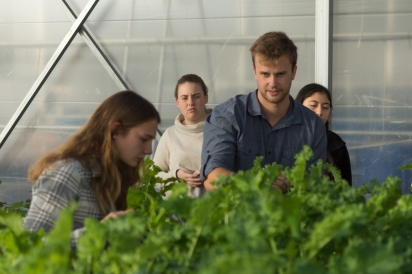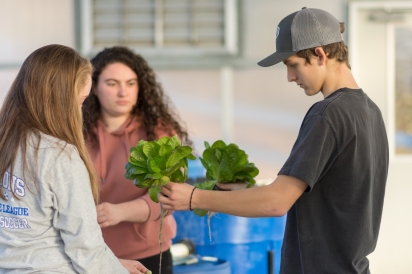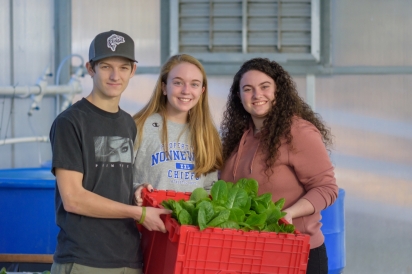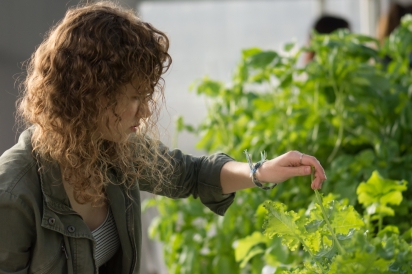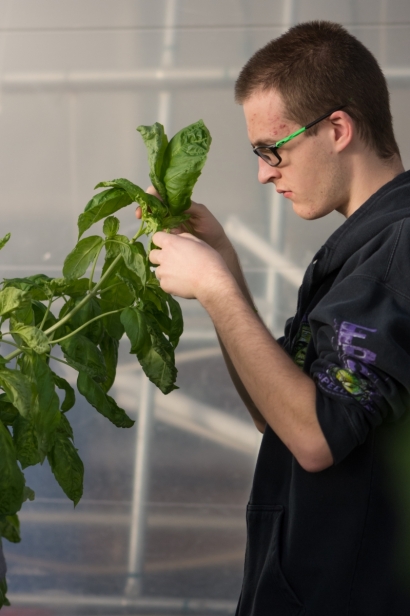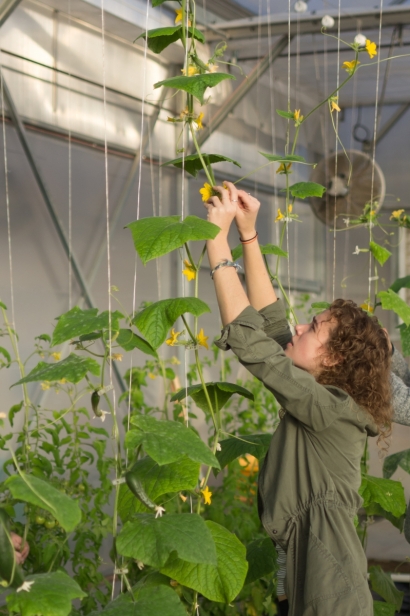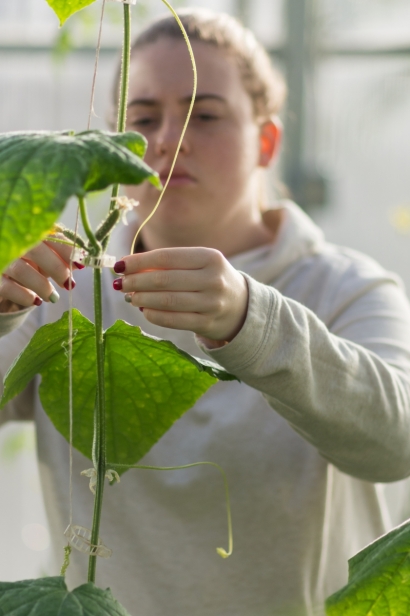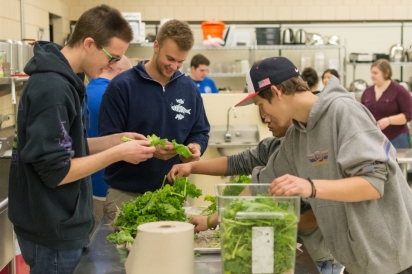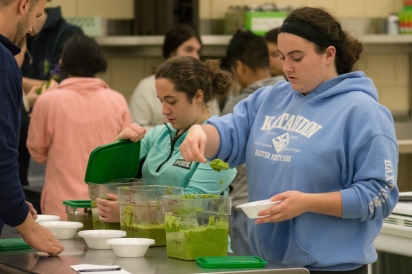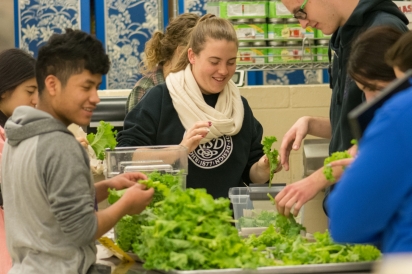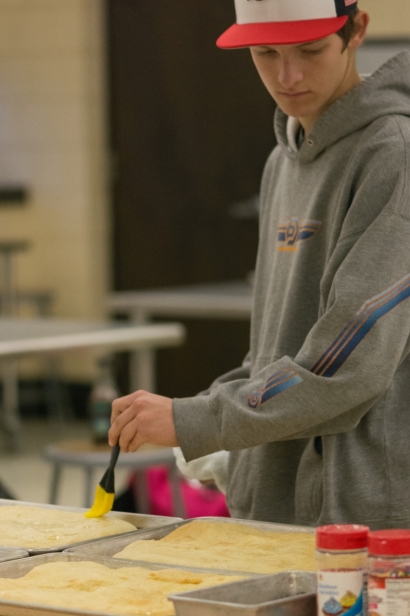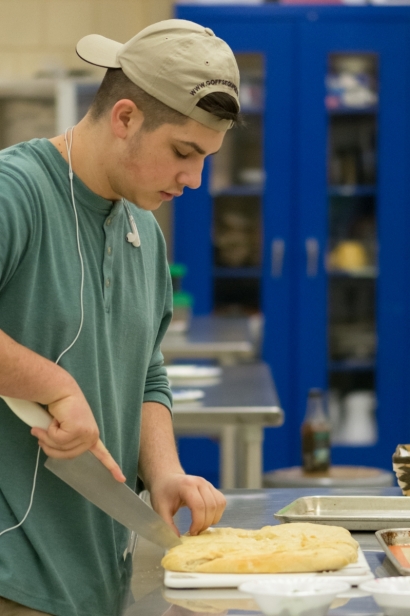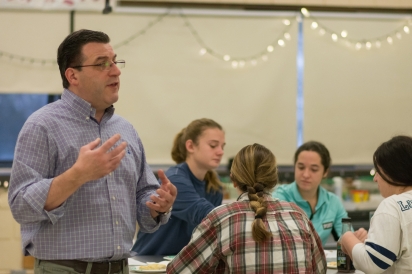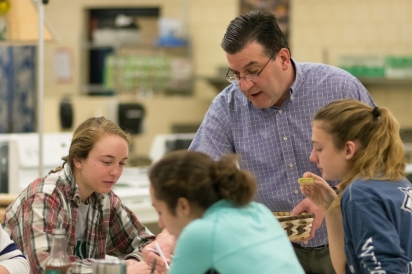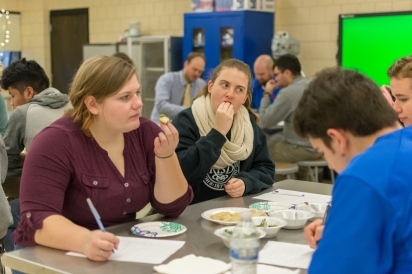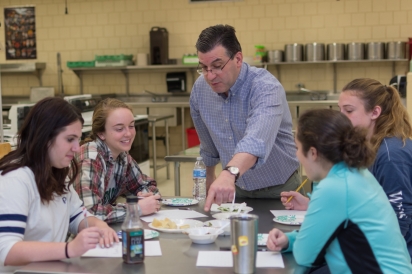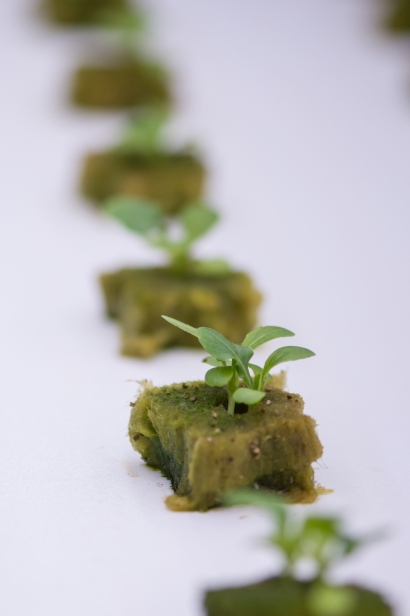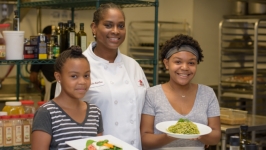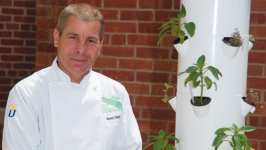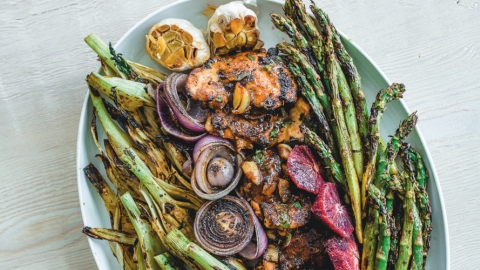Setting the Curve
In its not-too-distant past, Connecticut relied on a primarily agricultural economy to secure both health and livelihood for its residents. Connecticut’s contemporary economy finds us far from that base, and the intervening decades have, for many, helped develop a disdain for the farm work that once sustained our state. It’s a perception under which the stature of vocational-agriculture (vo-ag) schools have long suffered. But in Woodbury, a handful of enthusiastic teachers and students are operating in defiance of that notion and, in doing so, helping return local food to prominence in our state.
Based in Woodbury, The Ellis Clark Regional Agriscience and Technology Program works in conjunction with Nonnewaug High School to provide students with a balanced combination of technical agricultural knowledge, supervised agricultural work experience, and leadership training. Founded in 1920 to provide vocational-agricultural studies at Woodbury High School, it was the first dedicated agricultural program in the state and one of the first in the nation to teach agricultural sciences at the high school level. In the late ‘50s, the program regionalized in order to incorporate students from the 23 different towns in the area, and when Nonnewaug High School was built in 1970, the program officially relocated there.
Since its inception, the program has endeavored to prepare students for a great variety of jobs within the agricultural sphere while simultaneously providing a college preparatory education. “Vo-ag schools struggle with the reputation that they’re for students who can’t go on to college,” says Program Director, Bill Davenport, “but that’s a false perception. 80% of our students do go on to college, and close to half of them are in AP and honors classes.” Students in the agriscience program receive a comprehensive high school education, spending ¾ of their day taking “standard” classes (such as math, English, and history) and the remaining time in courses that are focused on agricultural sciences.
“Our purpose is to take students who have demonstrated an interest in pursuing an agricultural career, to show them all the areas in which they could specialize, and then to help them pinpoint what they want to do or, in some cases, what they don’t want to do,” Davenport says. “It’s really a career-based education centered on a three-component model: hands-on learning in and out of the classroom, work experience and internships through our Supervised Agricultural Experience (SAE) program, and leadership development through our For the Future of Agriculture (FFA) program.”
What may come as a surprise is just how varied a curriculum the program offers. From agricultural engineering and production, to greenhouse plant production and processing, the program aspires to cover the great breadth of disciplines, both technical and traditional, that comprise the modern agricultural industry. “The program is not necessarily restricted to what most people would think an ag school teaches,” says Tom DiMarco, an agriscience teacher specializing in plant sciences who is also a graduate of the program. “It includes floral design, veterinary science, horse management, landscaping, and of course, food production.”
One of the program’s newest courses, the Farm-to-Table class, is good evidence of the continued expansion of the program’s horizons. The class takes a handful of the vo-ag program’s existing disciplines and synthesizes them into a larger course that incorporates aquaculture, greenhouse production, local food production, and culinary arts to introduce students to a full food cycle.
The class is the brainchild of Tyler Cremeans, the school’s aquaculture instructor, and John Dominello, the culinary arts instructor, who both readily admit that the course fell together quite organically. “We grew tons of produce in the greenhouse,” says Cremeans, “and the students never really got to put it to use. They didn’t know what it was good for. One of my students picked some fennel that we had grown and had no idea what you could cook with it. I knew we had to correct that.”
That incident led Cremeans to turn to Dominello, a graduate of the Culinary Institute in Hyde Park and a former restauranteur who founded Matteo in Watertown. His culinary arts class was readily able to make use of the produce that Cremeans’ class had to offer; in exchange, his culinary students spent time in Cremeans’ greenhouse, learning more about the source of their raw ingredients. The teachers ultimately decided that it made good sense to combine the classes in an official capacity, and so the Farm-to-Table class was born.
Using a combination of on-site instruction and field trips, the class is able to participate in a wide variety of agricultural experiences. “We’ve covered everything from knife skills to kitchen sanitation to a demonstration about beekeeping,” says Cremeans, but the core curriculum still revolves around Cremeans’ aquaponics program and the food it produces, and the use students make of it in Dominello’s classroom-kitchen.
It begins in the school’s greenhouse, where students design, construct, and maintain a full aquaponic system. “The students are responsible for maintaining four recirculating aquaculture tanks, which they constructed during the first month of the class,” says Cremeans. “They’re raising tilapia in those tanks, and they use the nutrient-rich water from the fish to grow leafy greens and other vegetables in hydroponic beds they also built.” The greenhouse also includes an independent hydroponic system, which the students use to grow a variety of vegetables, including eggplant, fennel, arugula, and herbs.
What the students grow is then used in Dominello’s culinary arts portion of the course, which has four different levels. “The introductory course teaches a lot of safety, sanitation, and other foundational skills the students will need in the kitchen,” says Dominello. Students later put these skills to use when they learn production techniques for an assortment of entrées, sides, and other dishes. “If a student progresses through these classes and is very interested in culinary arts, they can continue on to our professional chef course, where they take a leadership role in the classroom that involves a lot of peer-to-peer teaching and demonstration,” Dominello says.
The culinary class exposes students to a spectrum of cooking and food preparation, including pizza (for which the students grew the garlic, basil, and tomatoes), roasted tilapia from the aquaculture system, pickled and preserved vegetables from the greenhouse, and even a vegetable tart with ingredients grown entirely by students, including zucchini, eggplant, tomatoes, garlic, and eggs from the school’s flock of laying hens.
Beyond merely preparing food, the culinary portion of the program also introduces students to the subtleties of cuisine. One lesson involves making four types of pesto from student-grown vegetables. They prepare the pesto varieties from kale, arugula, basil, and sorrel, then sample each and discuss the varying flavor nuances, including what each might pair best with in a larger dish or recipe.
One of the culminating events of the program’s year is their annual farm-to-table dinner, a scholarship fundraiser in which local chefs donate their time and talent to prepare dinner for attendees. Previous dinners have included noteworthy chefs, such as Chris Eddy from Winvian, Carole Peck (founder of Good News Café), and Carol Byer-Alcorace of New Morning Market. Students from the Farm-to-Table course also contribute and, in the process, get to see professional chefs at work. “Two years ago, our advanced class made apple-blueberry pie for the dinner,” Dominello says, “and this year, they made hors d’oeuvres that were based on what we had available in the greenhouse, such as pickled green tomatoes with pesto.” It’s a concluding event for the students that applies a year’s worth of work and education and helps demonstrate for them the way in which the food cycle can bring community together.
The vo-ag program’s success is perhaps best measured by the level of engagement and enthusiasm with which the students approach it. “One of our first weeks in the greenhouse, a couple of seniors who were very familiar with the course dropped by and ended up taking the instructional lead,” Dominello recalls. “They started to explain to the newer students how to set up the growing tables, where the nutrients come from, and how the greenhouse operates.” That event is emblematic of the atmosphere of student empowerment that permeates the school. “It’s the climate in the school,” says DiMarco. “Students are excited to share what they know with the rest of their classmates.”
The sense of camaraderie between the students is perhaps in part influenced by the lack of awareness or appreciation for the program from people outside of it. “There’s a huge misconception among people who don’t understand the vo-ag program,” says senior Libby Bennett. “People think ‘Oh, so you’re going to be a farmer?’ But there are so many options in addition to being a farmer or working with livestock. There’s veterinary science. There’s horse management. There’s aquaculture. And now there’s farm-to-table.”
This misconception occasionally follows students into the program, too. “I came into it thinking it was just going to be tractors, tractors, tractors,” says senior Chase Demato, who applied to the program primarily for its mechanical and engineering courses. “My point of view definitely changed. It’s not just tractors.” It’s a revelation shared by fellow senior, Larissa Gugliemetti: “It’s a whole community of people wanting to be vets, wanting to be scientists, wanting to go on and be great mechanics. This, by far, is the best experience I could’ve asked for.”
If student enthusiasm isn’t measure enough of the program’s popularity, application rates should be. “We currently have 151 applications for 65 open spots, next year,” Davenport says, “and it’s been that way for years. There’s obviously interest in pursuing career-based agricultural programs.” For the young men and women who are studying to become a part of Connecticut’s new agricultural economy, the career-centric education is just part and parcel of everyday high school life. “[Mr. Dominello and Mr. Cremeans] make it fun,” says Libby Bennett, “but they also know when we need to get to work, when we need to clean up, and when we need to get on a tractor and pick some potatoes.” It’s a statement that would feel out of place in a traditional high school, but that perfectly fits the changing career dynamic that their program is helping bring to Connecticut.
Readers interested in learning more about or supporting the program are invited to attend this year’s farm-to-table dinner on June 8 at Toplands Farm in Roxbury. Visit the program's website to purchase tickets.
The Ellis Clark Regional Agriscience and Technology Program at Nonnewaug High School: 5 Minortown Rd., Woodbury; 203-263-2186



